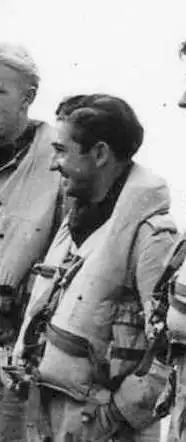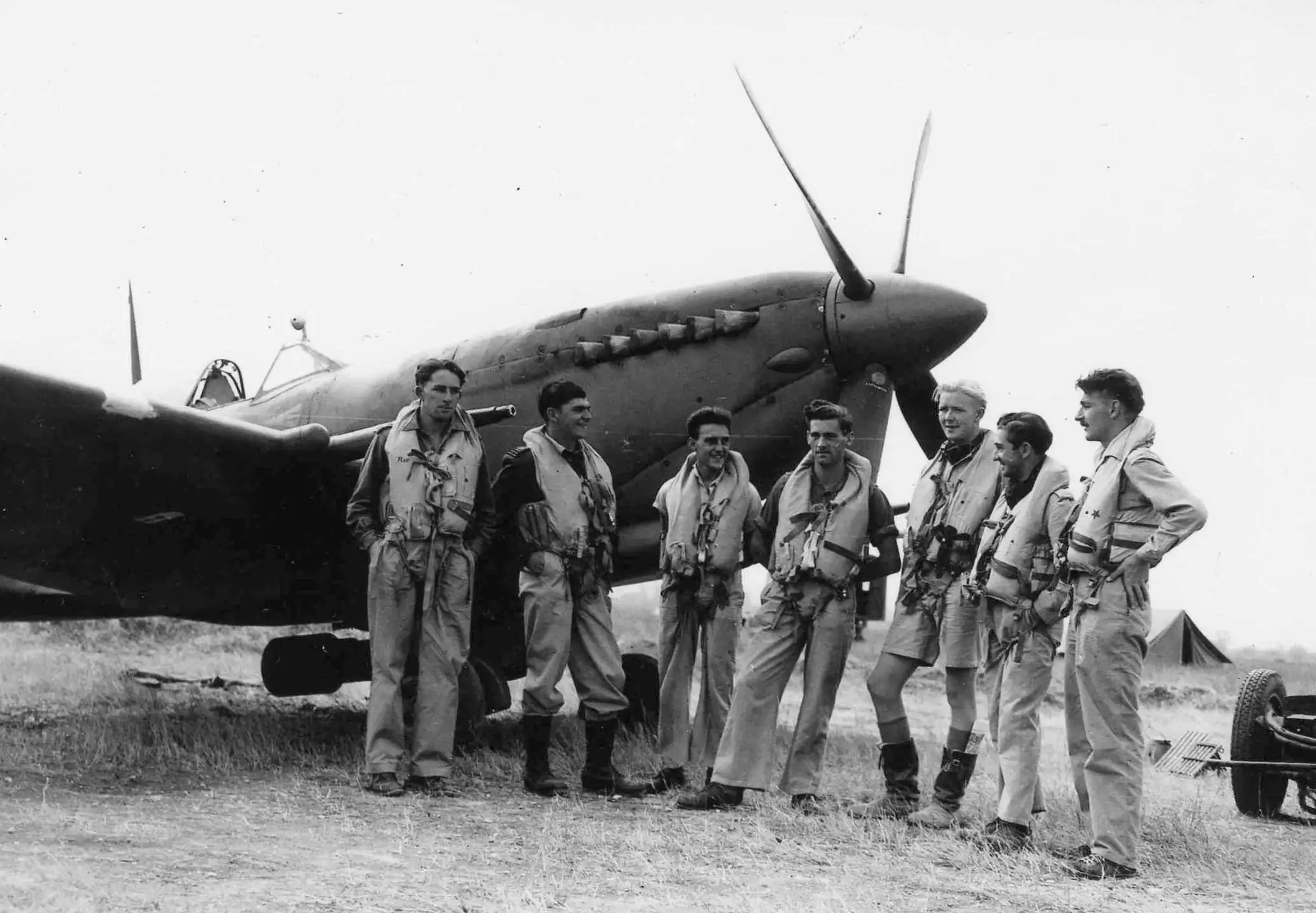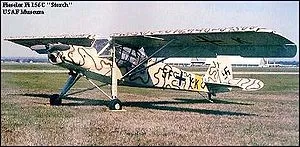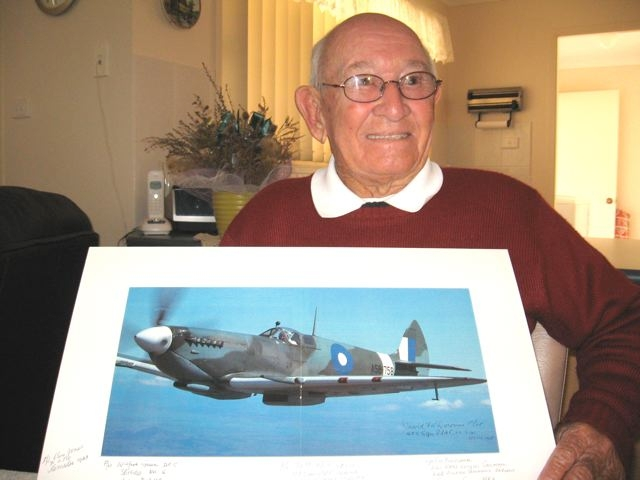WOFF Charles Clement Jones 421303



| Squadron/s | 1435 SQN RAF 185 SQN |
| Rank On Discharge/Death | Warrant Officer (WOFF) |
| Nickname | Clem |
| Mustering / Specialisation | Pilot |
| Date of Birth | 23 Apr 1921 |
| Date of Enlistment | 31 Dec 1942 |
| Date of Death | 11 Sep 2024 |
| Contributing Author/s | ex Chaplain (SQNLDR) Ron Elliott Spitfire Association July 2013 |
Clem Jones was born in Newport, England on 23/04/1921 but grew up in Mayfield, NSW, Australia and educated at Broadmeadow High School. Before his service in the RAAF he worked at Lysaghts as a cold roller assistant rolling sheets of flat iron.
He enlisted in the RAAF on the 31st of December 1942 and went to night school with another Novocastrian Sid Handsaker and both would ultimately fly the Supermarine Spitfire in wartime operations. Sid was with No. 451 RAAF Squadron and Clem with No. 1435 Sqn RAF and No.185 RAF Squadron.
Clem did his ITS at Bradfield Park (NSW) before going to the small Riverina town of Temora in south west NSW at No.10 EFTS to train on the DH 82a Tiger Moth. From there he would become a part of the Empire Air Training Scheme (EATS) at Brandon, Manitoba, Canada. Advanced training would take place on Harvards with No.13 SFTS from where he would be awarded his coveted "wings" at St. Hubert's, Montreal. He was now on his way to join "the big league"!
His next destination would be with No.17 AFU at Calvery near Crewe in Cheshire. Here in England's Midlands he would train on the Miles Master. Whilst at Crewe he was undertaking a night landing exercise when a raid erupted at the nearby township where an ammunition dump and a Rolls Royce engine factory were located. Clem would succinctly recall.
"I was up in the air for twenty minutes in total darkness before the authorities could get me down! All the airfield lights had been switched off. All the while I knew that barrage balloons were in the vicinity! It wasn't a great way to spend an evening! You didn't know where you were! You just had to wait till they turned the lights back on!"
There followed a time in the Middle East with No.71 OTU at Ismalia on the Suez Canal where he had flown Hurricane Mk I and Mk II's over a period of two months. These training aircraft had been salvaged from the ocean. From there he would go to Italy with No.1435 RAF Squadron in 1943 flying Spitfire Mk.Vc's. Just over the horizon would be an event that nearly claimed his life.
Whilst flying with No.1435 Squadron at Brindisi he had gone after two high flying ME 109's that were taking photographs over Italy. Clem had urged his Spitfire to 35,000 feet before blacking out! His aircraft had rolled over onto its back before entering a high speed dive. Authorities claim he was doing 600 miles per hour such was the sorry state of his Spitfire.
Wings were bent on upper surfaces, the aircraft was shaking badly, the radio had blown up, and the undercarriage wouldn't come down. It took from 15,000 feet to 5,000 feet for him to recover his senses and find out who he was! His Spitfire got down to 2,000 feet before a badly shaken Clem could bring his aircraft totally under control.
As Clem had said, "I had almost given up and had thought that this was it. I was black and blue such was the battering I had taken. I was in hospital for two weeks recovering from my injuries whilst the Spitfire had to be completely written off."
It was a miracle that this fighter aircraft hadn't broken up; a living tribute to the manufacturer and the superb flying qualities for an aircraft which has etched itself into the annals of aviation history, not to mention the skill of the pilot who had managed to get his aircraft down in spite of the difficulties. Because of injuries sustained a posting to Malta had resulted. His new squadron would be No.185 RAF.
No; 185 Squadron RAF, Perugia, Italy with Spitfire Mk IX and Clem Jones second from right.Whilst on this island fortress every pilot had to take their turn on weather flights. It was a dicey business! Occasionally he had to do these flights in the Mk.VII Spitfire with pointed wingtips. The huge Cumulus Nimbus clouds that brewed up in that corner of the world were even more deadly than any enemy aircraft.
By 1943 the squadron was almost entirely on sweeps and bomber escorts in preparation for the invasion of Sicily. As the invasion took the fighting steadily away, No.185 Squadron remained at Malta.
At the end of 1943 the squadron moved to Italy and during 1944 was preoccupied with ground targets, flying shipping recce's and ground support sorties. As by now Clem a highly experienced Warrant Officer pilot would fly the Mk.IX and Mk.VIII Spitfires as the fight was further taken up to the enemy. He would follow the army up through Italy to Trieste on the Austrian border when the war ended.
From Malta to Trieste would encompass 230 hours on flight operations, bringing a grand total of 650 wartime flying hours for a grand total of 1200 hours inclusive of peacetime flying instruction with the Royal Newcastle Aero Club in homeland Australia.
An interesting perspective on Clem's wartime flying was air testing various aircraft at war's end including Mustangs, Kittyhawks, Spitfires and remarkably even enemy aircraft inclusive of the Focke-Wulf F.W.190 and the Messerschmitt ME 109 along with the incredible STOL Fiesler Storch. All this took place from a maintenance unit at Foggia. This Australian pilot must have thought all his birthdays had come at once. After the stress of combat flying, here was an opportunity to enjoy flying for flying's sake!
On a brighter, personal note, Clem had met a lady named Freda at a dance at Nantwich located near the Cheshire base when this young aviator had been doing advanced flying training with No.17 AFU on Miles Masters. Freda was nursing at a local hospital, where she was allowed out on a Saturday night. Clem would take her out on a black painted Hercules pedal bike and gives a new dimension of understanding to Daisy's bicycle built for two!
Her late leave pass carried the stipulation that Freda had to be in by 11.00 p.m. no matter that it seemed too early or that it was the land of the long twilight sun. On one occasion Clem flew low over the hospital to register his presence but only the matron heard his arrival call. However, true love always wins out!
At war's end Clem came back home whilst Freda came later as a ten pound Pom. They were married in St. Andrew's Church of England at Mayfield to begin 63 years of life‘s shared journey. They have two children Robyn and Chris, along with three grandchildren and five great grandchildren plus one on the way.
This returned serviceman went back into the trade as a builder and joiner where he would spend nineteen years. In 1966 he would become sales representative for Mastercraft chocolates. This mouth watering responsibility allowed him to cover an area that included Coffs Harbour and Tamworth. Sadly, he was only there for two years before being retrenched as the company was taken over by Lifesavers.
He then got a job with Cyclone KM Windows where he would become its Sales Manager for nineteen years before retiring from the company. His flying interests were perpetuated through being a flying instructor with the Newcastle Aero Club. Tiger Moths, Austers and Chipmunks would allow for his flying skills to be passed on to new generations of keen students.
Clem has learned to love life philosophically. The close shave would have been compounded by the fact that whilst on his way to the Middle East, he was on the first convoy of ships to go through the straits of Gibraltar into the Mediterranean. On the way they were bombed by Stuka's and J.U.88's and lost a lot of ships.
Clem came up on the deck of the "Almazt" just in time to see a J.U.88 crash into the ship's bridge. In typical Aussie understatement he would simply say, "It was pretty dicey!"
Yet, to this day this ancient airman could still say that these were the greatest years of his life. Along the way this Australian airman had risen to the rank of Warrant Officer. Clem was discharged on the 23/11/1945.
Even today he still checks out the landing patterns of aircraft heading into the nearby Rutherford aerodrome. There's no way he intends to completely shut off from the past! How could he?!
Not far away, his wife Freda smiles the smile of contentment. They both have shared so much!
Thanks to USAF Museum for photo of the Fiesler Storch


